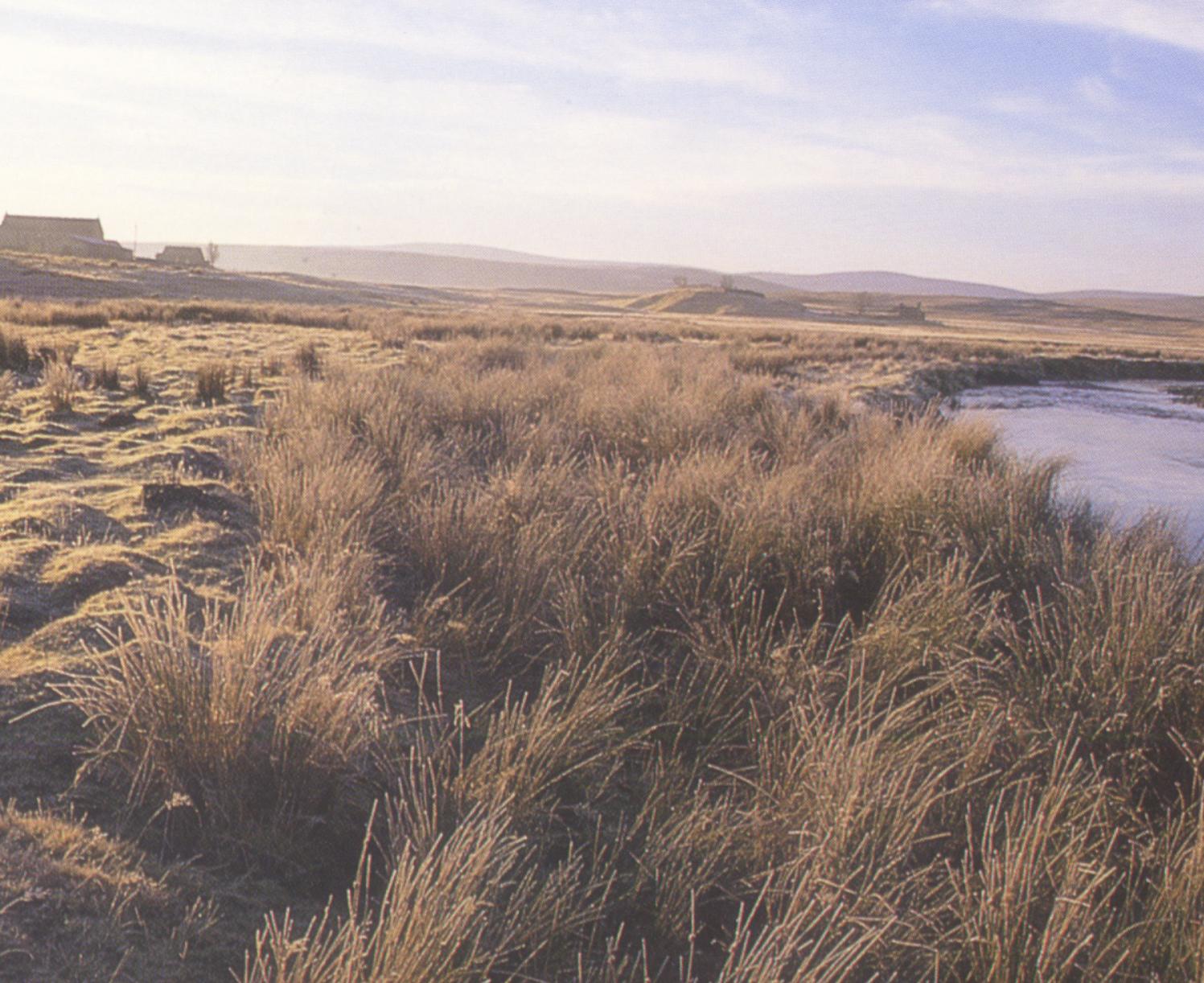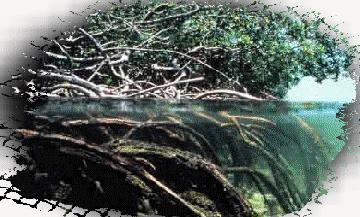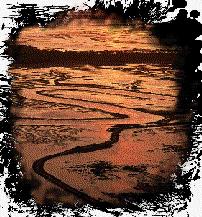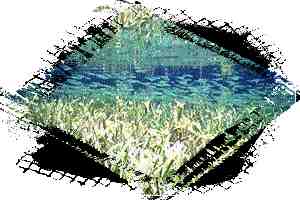Types of
Wetlands
Inland
Wetlands
Palustrine are inland swamps, bogs, marshes, wet prairies, fens, or ponds.
They are fresh water or have very low salinity and are usualy forested
or have low scrub bushes. Palustrine swamps can be further divided by dominant
plant type such as cypress swamps, peat bogs, lichen wetlands, needle-leaved
evergreen wetlands, and hemlock wetlands. An example of some trees that
grow in swamps are: blad cyrpress ( Taxodium distichum), water gum (Nyssa
aquatica), and water locust (Gleditsia aquatica). Some wetland shrubs include:
buttonbush (Cephalanthus occidentalis), red mangrove ( Rhizophora mangle),
and swamp rose (Rosa palustris).
 Palustrine wetlands also support a large animal and fish populations. The
wetland ecosystem includes blue herons (Adea herodias), fish such as the
amozonian discus (Symphysodon discus), wood frogs (Rana sylvatica), alligator
snapping turtles (Macroclemys temmincki),and mangrove water snakes (Nerodia
fasciata compressicauda). The ecosystem of the wetlands while rather
diverse is also fragile. The slightest human disturbance or large storm
can hurt the environment.
Coastal
Wetlands
Palustrine wetlands also support a large animal and fish populations. The
wetland ecosystem includes blue herons (Adea herodias), fish such as the
amozonian discus (Symphysodon discus), wood frogs (Rana sylvatica), alligator
snapping turtles (Macroclemys temmincki),and mangrove water snakes (Nerodia
fasciata compressicauda). The ecosystem of the wetlands while rather
diverse is also fragile. The slightest human disturbance or large storm
can hurt the environment.
Coastal
Wetlands
Mangrove
Swamps
These are found along tropical and subtropical coastlines. A collection
of haolphytic trees, shrubs, and other plants grow in salt water. If you
were to enter into a mangrove swamp, it would look much like a maze of
woody vegetation and peat. The most dominant region for mangrove swamps
is the Indo-West Pacific region. There are 30 to 40 different species of
mangrove found in this region compared to a mere ten in the United States.
 The intertidal areas of soft sediment are often colonized by mangrove trees.
These mangrove trees get the air that they need from their above ground
root system. These root systems trap sediment. This system supports a rich
diversity of life. Microscopic algae grow on the surface of the roots of
mangroves. Crabs and shrimp are abundant, as are clams and snails.
The intertidal areas of soft sediment are often colonized by mangrove trees.
These mangrove trees get the air that they need from their above ground
root system. These root systems trap sediment. This system supports a rich
diversity of life. Microscopic algae grow on the surface of the roots of
mangroves. Crabs and shrimp are abundant, as are clams and snails.
Salt Marshes
 Salt marshes, like mangrove swamps, are found along intertidal shores.
However, these wetland systems occur only in middle and high latitudes.
Salt marshes are dominated by salt-tolerant grasses. Salt marshes rank
among the most productive ecosystems in the world.
Salt marshes, like mangrove swamps, are found along intertidal shores.
However, these wetland systems occur only in middle and high latitudes.
Salt marshes are dominated by salt-tolerant grasses. Salt marshes rank
among the most productive ecosystems in the world.
The salt marsh forms an important interface between terrestial and marine
habitats. Plants that colonize along shore in the calm water slow down
the current and allow more silt to accumulate.
The Atlantic coast of North America has over 2,300 square miles of salt
marshes dominaed by the grass Spartina. There is only a small portion
of salt marsh vegetation that is consumed directly by animals. The rest
of the plants decay and become suspended as fine particles. The plants
nutrients are recycled within the marsh. Salt marshes are important habitats
for oysters, shrimp, crabs, flatfish, and mullet.
Freshwater
Tidal Marshes
This category includes freshwater marshes close enough to the coasts to
experience significant influence from the tides, but far enough upstream
to lack the salinity of a salt marsh. Thes systems are similar to salt
marshes, but have a greater diversity of life because there is not a constant
problem of silt build up to be dealt with. The plant diversity is very
high and more birds frequent these marshes more often than any other coastal
wetland type.
Human development has hurt these marshes as the marshes are often at the
most optimal site for development. An example would be the freshwater tidal
marshes surrounding the Chesapeake Bay because in the past decades they
have been stress by the development of a once rural area.
Seaweed
Based Systems
Seaweed based systems are made of seaweed. There are several types
of seaweed: giant kelp, rockwed, and kelp. Giant kelp is rather large (hence
the name) measuring up to 130 feet in length. These are harvested for substances
used in food processing. Giant kelp beds are a home to a variety of invertebrates
and fish. Kelp extends only 3 to 4 feet in length, but their beds are also
home to a diversity of species. One of the most common inhabitants of kelp
beds is the Atlantic lobster. Rockweed grows between high- and low-tide
marks, or intertidal zones, on rocky shores. The only organisms that live
here are those which can attach themselves firmly to the rocks. Barnacles,
limpets, periwinkles, and mussels just name a few.
Sea Grass
Beds

These wetland systems are found just below the low tide mark. Most plant
material that is produced is decomposed by fungi and bacteria. Sea grass
beds slow the flow of water, which allows silt to deposit. The sea grass
beds allow organisms to be sheltered from their predators and because of
this shelter, many fish lay eggs in the sea grass beds so that their offspring
can take advantage of this shelter.
Manatees and dugongs feed on sea grasses. Green turtles compete with the
dugongs for sea grass as food. Other species that may habitat sea grass
beds include worms and clams, who burrow in the silt.